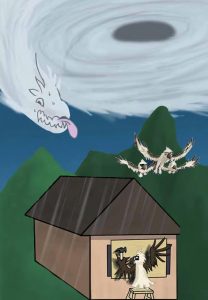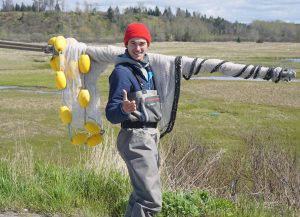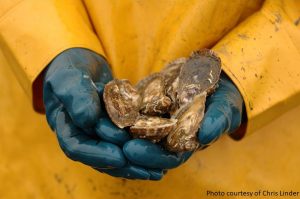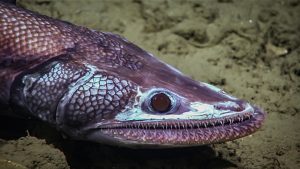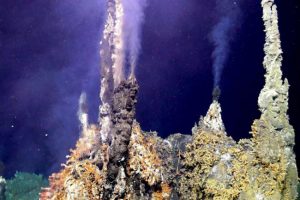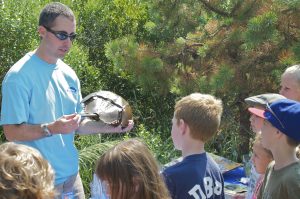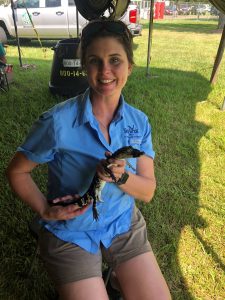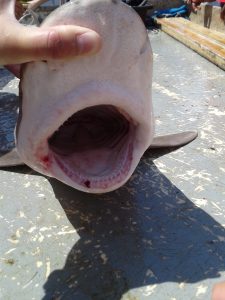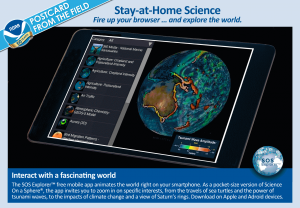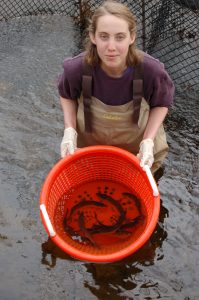Designed to Survive: Prepare Your Home to Withstand Storms
Kanesa Duncan Seraphin, NOAA’s Hawai’i Sea Grant, Honolulu, HI Large storms can bring destructive winds, rain, flooding, and storm surge. What materials or designs help your house survive a storm? How can homes be built, or modified, to keep people dry and safe during strong storms? Join University of Hawaiʻi Sea Grant educator, scientist, and…
Read MoreSalmon in the Winter: Anadromous fish under ice
Coowe Walker and Jacob Argueta, NOAA’s Kachemak Bay National Estuarine Research Reserve in Kachemak Bay, AK What do you know about baby salmon? Join us to learn about where salmon spend their early life stages, and how they survive in watersheds blanketed with snow and ice. We will talk about the importance of groundwater on…
Read MoreOysters: Nature’s Vacuum Cleaners
Harriet Booth, NOAA’s Woods Hole Sea Grant and Cape Cod Cooperative Extension in Barnstable, MA Have you ever seen or eaten an oyster? How is it different from a clam? Did you know they can filter 1.3 gallons of water per hour and are often put in bays and salt water ponds to clean up…
Read MoreDeep and Creepy: Things that go Bump in the Deep Sea
Kasey Cantwell, NOAA’s Office of Ocean Exploration and Research in Silver Spring, MD A special Halloween edition of NOAA Live! – “Creatures of the Deep” will explore the fascinatingly creepy creatures of the deep ocean. Join us to learn more about the unique animals that exist in the deep sea and the different adaptations that…
Read MoreExploring the Ocean Seafloor: Underwater Volcanoes and their Habitats
Colleen Hoffman, Cooperative Institute for Climate, Ocean, and Ecosystem Studies and NOAA Pacific Marine Environmental Lab in Seattle, WA Come learn about the explosive world of underwater volcanoes! Alien looking organisms, robots and submarines, and eruptions are all part of the fun in studying these systems 10,000-13,000 feet below sea level. Narrated by a marine…
Read MoreBlue Blood, Green Eggs, and Red Knots: The amazing story of the horseshoe crab
Chris Petrone, NOAA’s Delaware Sea Grant in Lewes, DE About 20 million years ago, the horseshoe crab, as we know it today, evolved. Members of Family Limulidae, which include four extant species of horseshoe crabs, have relatives—the trilobites—that existed on Earth over 500 million years ago! In North America, just one species of horseshoe crabs…
Read MoreCoastal Marshland in My Texas Backyard
Nikki Fitzgerald, NOAA’s Texas Sea Grant in Anahuac, TX Let’s explore Nikki’s backyard coastal marsh together in the ‘Alligator Capital of Texas’! She will take us on a journey while kayaking or riding on the back of a marsh buggy. Have you ever heard a baby alligator chirp before? No worries, Nikki will let you…
Read MoreSharks Make Sense
Chris Flight, NOAA’s Mississippi-Alabama Sea Grant Consortium at the Dauphin Island Sea Lab in Dauphin Island, AL Sharks are some of the most successful predators in the ocean. There are hundreds of different species that come in all sorts of shapes and sizes. Have you ever wondered what makes them so good at what they…
Read MoreExplore the World with NOAA’s Fun, New App
Hilary Peddicord and Beth Russell, NOAA’s Earth System Research Laboratories in Boulder, CO The SOS Explorer™ free mobile app animates the world right on your smartphone. As a pocket-size version of NOAA’s Science On a Sphere®, this free app invites you to zoom in on specific interests, from the squiggly warm and cold lines of…
Read MoreSwimming Upstream with River Herring
with Abigail Archer, NOAA’s Woods Hole Sea Grant and Cape Cod Cooperative Extension in Barnstable, MA Most fish live only in freshwater or only in saltwater, but some special fish can swim back and forth between both! How do they do it? Why do they do it? Tune in to learn the answers and meet…
Read More
